Labels for Safety, Visuals and Facility ID Desktop Printers
Labels for Product, Wire and Lab ID Benchtop Printers
Labels for Safety, Visuals and Facility ID Desktop Printers
Labels for Product, Wire and Lab ID Benchtop Printers
Safety and Facility ID Desktop Printers
Product, Wire and Lab ID Benchtop Printers
Barcode Scanner and Printer Kits
Barcode Scanner and Printer Kits
PaintStripe Floor Marking Stencils
Valve Lockouts & Hose Lockouts
Group Lock Boxes & Permit Control
Brady Safety Lockout Tagout Services
Pipe Marker Accessories & Mounting Brackets
Maintenance and Production Tags
Calculators and Assessment Tools
Product Finders and Data Sheets
The onboarding process is a critical time for both employers and employees. It's during this time that new employees learn the ropes of their new job, get to know their co-workers and establish themselves in their new roles.
Unfortunately, it's also a time when accidents and injuries can happen. Studies show that new employees are more likely to be involved in a workplace accident than their more experienced counterparts.
So, how can you ensure that your new employees have a safe and productive first few weeks on the job? This article provides you with a few actionable tips for safely onboarding new employees.

Preboarding refers to the process of orienting and acclimating new hires before their first day on the job. (As opposed to onboarding, which is the process of acclimating new hires on their first day of work.) This can include sending out informational materials, scheduling introductory meetings or providing access to online resources.
It's essential to be prepared for the preboarding process. Here are a few tips to make safety top of mind:
First impressions matter. Research has shown that people make judgments about others within the first one-tenth of a second of meeting them. When new hires arrive on their first day, it's important to ensure they have a positive experience.
One way to do this is to educate new employees on what to expect on their first day. This way, they can arrive feeling confident and prepared, rather than feeling anxious and out of place.
According to a study by Gallup, nearly 88% of employees said that their company's onboarding process was lacking, compared to just 12% who said their companies did a great job with the onboarding process.
To achieve your company being in that 12% category, consider these courtesies when preboarding new hires. Be sure to communicate any safety information they need to know during the preboarding process. This will ensure they are fully prepared for their first day on the job. Specifically, detail any accessible entryways or areas to avoid. This will help them feel more comfortable on their first day and also help to prioritize their safety. This step could be taken care of even further back in the process during the interview stage, especially if the interview is on-site.
By educating new hires on what to expect, you can set them up for success from the very beginning. This will not only help them feel more comfortable, but also help them be more confident and productive in their new role.
Implementing an electronic hiring process has many benefits for your business. Perhaps most importantly, it allows new hires to submit requested records online. This is a great way to improve accessibility for new hires.
Accessibility means that employees can access the information and resources they need to do their job, regardless of their physical location or ability. Accessibility is vital in the workplace because it helps ensure that all employees have an equal opportunity to succeed.
Electronic records may also serve as a safety measure. They can help prevent accidents and injuries by ensuring everyone has the same information.
Electronic records can also help employers track employee performance and compliance with safety regulations.
An electronic hiring process is a great way to improve accessibility and safety in the workplace. Additionally, it can help save time and money by making it easier to track employee performance.
When bringing a new employee on board, it's important to ensure their safety in the workplace. Here are some tips for managers to help make the transition safe and successful for new hires.
New hire orientation is an important time for companies to ensure that their new employees are properly trained and informed about company policies and procedures. This includes safety procedures in the event of an emergency.
When planning new hire orientation, it’s important to make sure that emergency information is easily accessible. Designate a person to present the emergency information, have printed materials available or make the information readily available online.
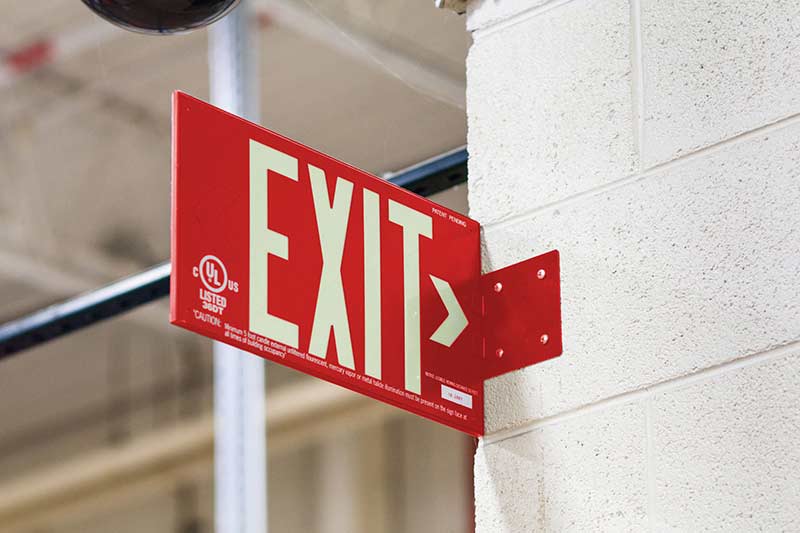
It is important to be clear and concise. Here are some tips for those presenting emergency information during new hire orientation:
For those attending new hire orientation, it’s important to pay attention to the emergency information that’s being presented. This includes taking note of the procedures in place and where to find more information. It’s also important to ask questions if anything is unclear.
When it comes to safety in the workplace, it's essential to be proactive and take note of any existing allergies or injuries that your employees may have. This way, you can prevent further injury and ensure everyone is able to work in a safe and comfortable environment.
You can obtain this information from your employees in a few different ways. For instance:
If an employee does disclose an allergy or injury, be sure to make a note of it in their file. This will help you remember to take the necessary precautions in the future.
Review the company's safety protocols as part of your orientation to ensure employees know what to do in an emergency. Here are some common safety protocols that everyone should be familiar with:
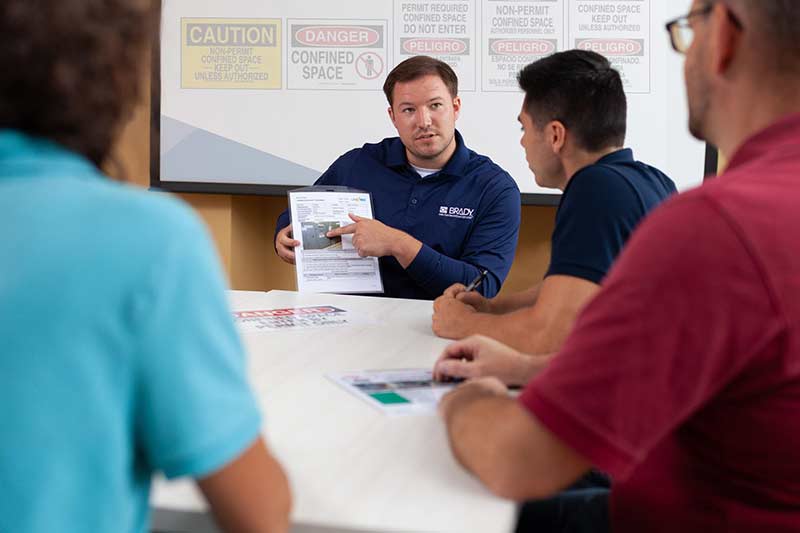
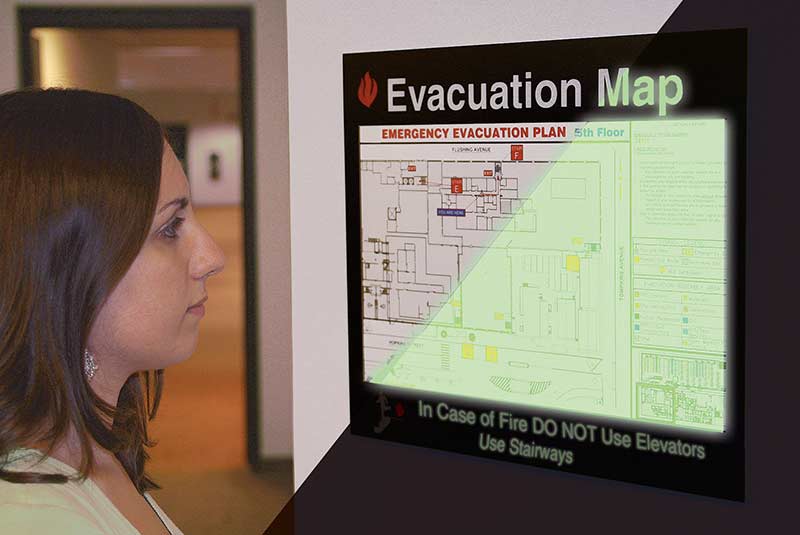
Our tip: Use past accident examples and lessons learned in training. And, make training hands-on and in-person whenever possible. This will help to keep new employees engaged and safety topics more impactful.
Following these safety protocols will help keep your team safe in the event of an emergency. If you have any questions about safety training, be sure to ask your supervisor or another member of the company's safety team.
Starting a new job is an exciting time, but it can also be a bit nerve-wracking. You want to make a good impression on your first day, and one of the best ways to do that is by being safe.
Whether you're working in an office, warehouse or other facility, there are some basic safety tips that every new hire should follow on their first day.
As a new employee, it's essential to familiarize yourself with the location of all personal protective equipment, first aid kits and other medical equipment. In the event of an emergency, every second counts, so knowing where these items are located can help ensure a quick and efficient response.
Labeling is also critical in ensuring that everyone knows which equipment is for medical use and which is for safety purposes. In a busy workplace, it's easy to mix up the two, so clearly labeling everything is crucial.
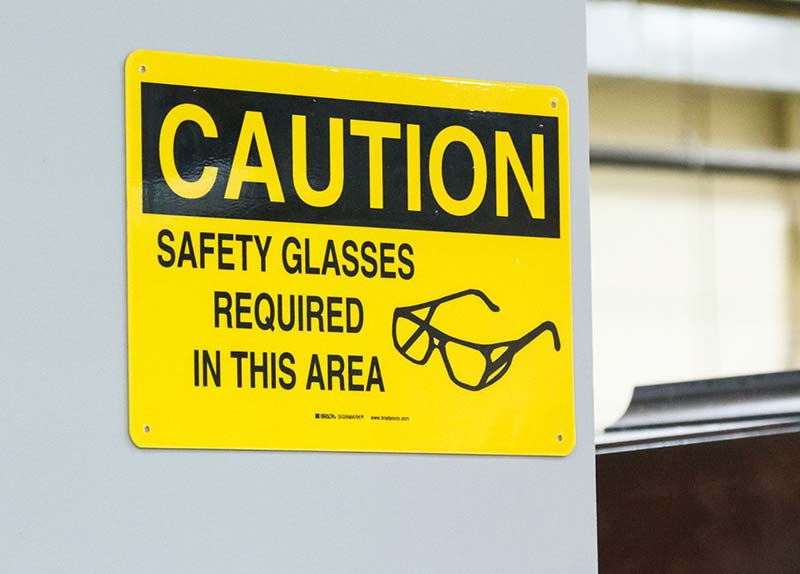
A PPE sign indicates the type of personal protective equipment that is required for a particular job or task. It also provides information on how to use and care for the PPE properly.
PPE signs typically include the following information:
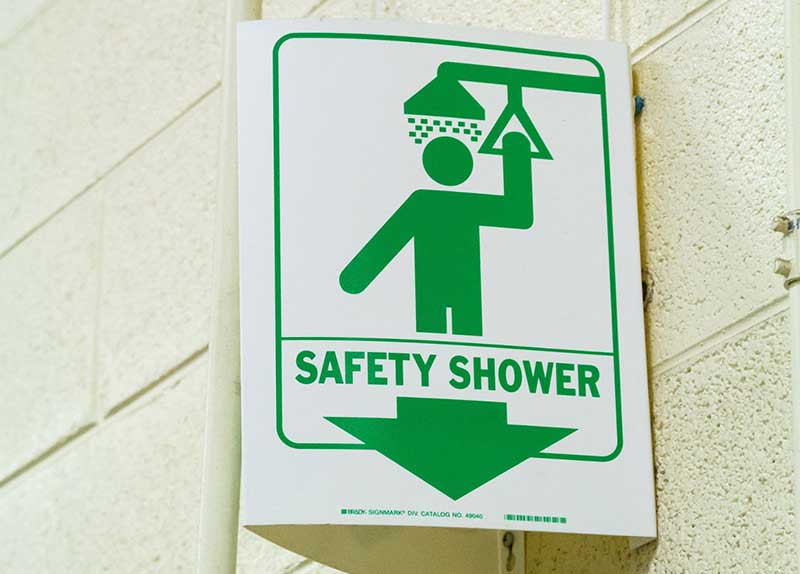
First aid signage is imperative for worker safety since it shows them where first aid stations are in case of an emergency. While all serving a similar purpose, there are different types of first aid signage for different situations, including:
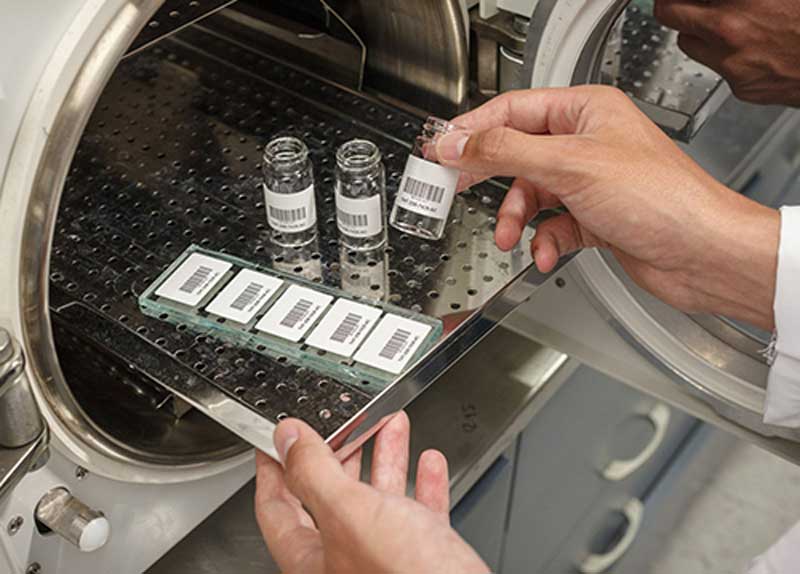
Used to identify lab specimens, proper labeling in a lab environment is crucial to ensure identification can be met for a variety of conditions and specifications. These label types include:
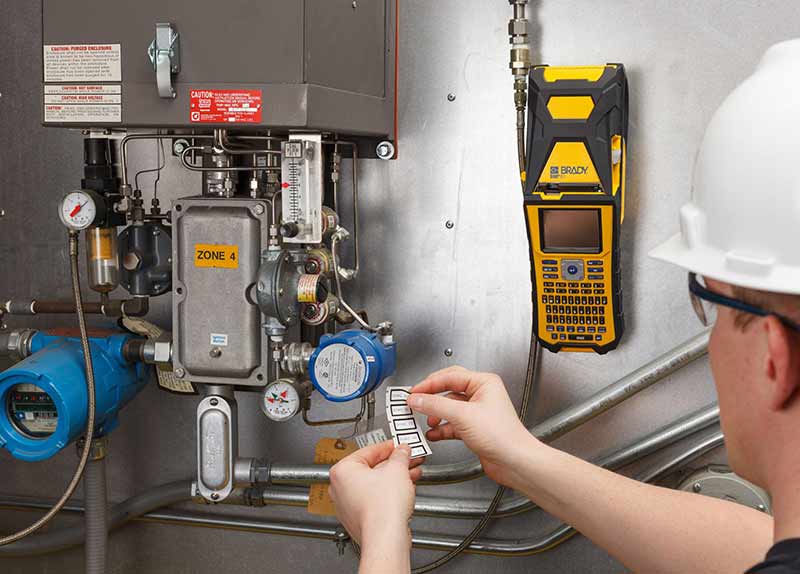
A heat-resistant label indicates that the product to which it is affixed can withstand high temperatures and harsh chemicals without damage, which is important since lack of identification can lead to hazardous situations for workers.
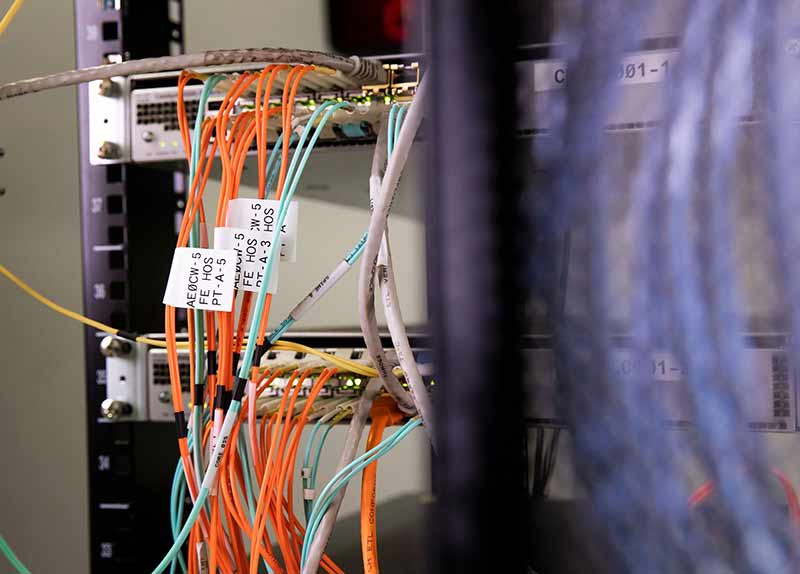
Cable labels are used to organize and effectively install and repair your wires and data lines, among other uses.
These labels, that include wrap-around, heat-shrink and self-laminating, offer crucial identification so anyone working on them can quickly know what that particular wire or cable’s purpose is since cutting or disconnecting the wrong wire could be potentially hazardous to workers.
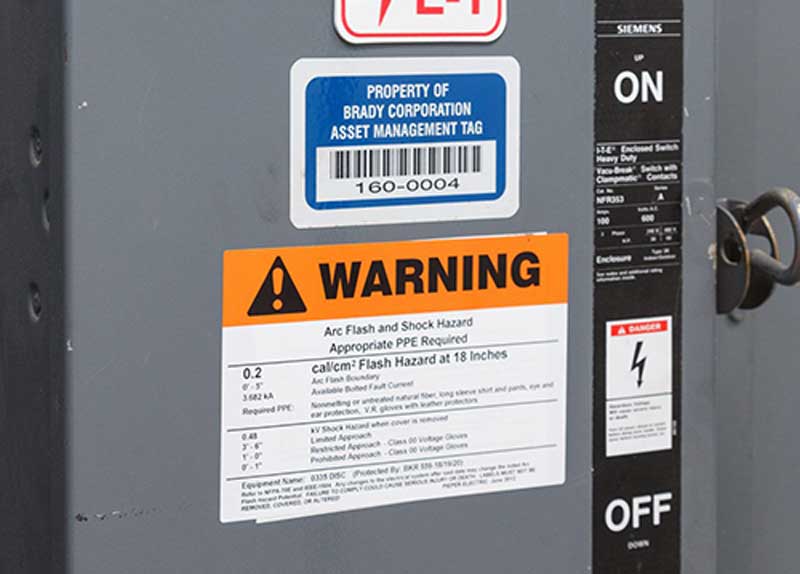
Electrical labels keep your team safe and signal what they need to know about the electrical hazards around them. Whether it be arc flash warnings, conduit or voltage marker symbols for identifying energy sources in an emergency situation, the labels make it clear.
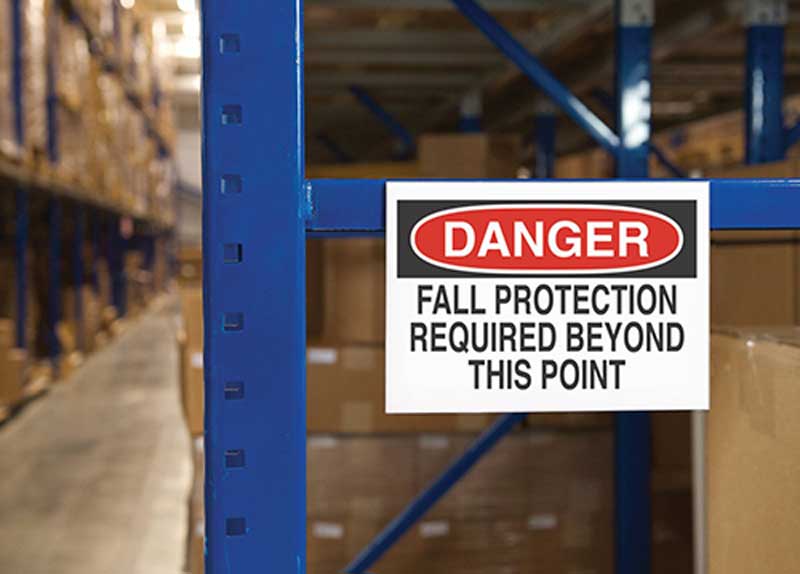
Safety awareness and compliance signs identify specific areas of your facility that pose danger and/or require extra caution. Promote safety and teamwork in your facility — and stay compliant with OSHA regulations — with a wide array of sizes, materials and text legends available for almost any application.
When new employees join your company, make sure to formally introduce them to the rest of the team. This helps everyone feel more comfortable and familiar with one another and can even help increase safety in the workplace. By knowing the new employees and their roles, everyone is better equipped to work together safely and efficiently.
Formal introductions can also start the process of relationship building. This is key to forming new and/or better committees and groups that monitor and enhance safety in the workplace.
Before a new employee's first day, it's important to have their workspace ready. This includes making sure they have the proper safety equipment.
Employee safety is a top priority in all industries, particularly in manufacturing. Employees must have the proper personal protective equipment to protect them from potential hazards. This includes items such as gloves, earplugs and safety glasses.
Having the proper PPE is just one part of keeping employees safe. Employers must also ensure that safety protocols are being followed. This means having regular safety meetings, conducting employee training and maintaining a clean and safe work environment.
Providing employees with the right equipment and following safety protocols can help prevent accidents and injuries in the workplace. This is especially important when it comes to lockout tagout, which means keeping procedures, padlocks and devices at the point of use. This, in turn, can help improve productivity and morale. A safe workplace is a happy workplace!

The onboarding process doesn't end on the first day or even the first week of employment. It's important to continue training new employees on safety procedures throughout their job, whether that’s through annual refresher training or training for new processes or procedures. For companies that lack the time, resources or expertise, Brady Safety Services offers a convenient, trusted way to maintain safety in the workplace.
No matter the method or timing, maintaining a safe work environment is the responsibility of everyone in the company, from management to front-line employees. By following these simple tips, you can help ensure that your workplace is safe for everyone.